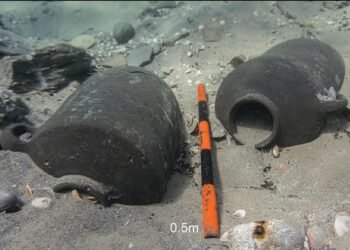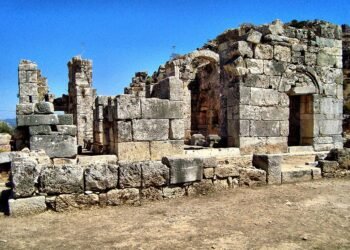In a thirteen-year study led by Dr. Alessandro Launaro from the University of Cambridge’s Classics Faculty, a team of archaeologists has challenged prevailing assumptions about the decline of the Roman Empire in Italy.

The focus of their research, Interamna Lirenas, a town in Southern Lazio traditionally regarded as a failed backwater, has emerged as a resilient hub that defied expectations, thriving well into the 3rd century CE.
During the Crisis of the Third Century (CE 235-284), a period marked by the Roman Empire’s near-collapse due to internal strife, barbarian invasions, and economic turmoil, Interamna Lirenas continued to flourish. Contrary to previous beliefs, the town’s decline, as revealed by an extensive pottery analysis, began approximately 300 years later than initially assumed.
Founded in 312 BCE as a Latin colonia, Interamna Lirenas gained patronage from Julius Caesar in 46 BCE. The town’s strategic location, situated between the Liri and Rio Spalla Bassa rivers, contributed to its significance. Dr. Launaro emphasizes that its position played a crucial role in consolidating support for Caesar during the civil wars.
Recent excavations, supported by magnetic and ground-penetrating radar surveys, uncovered a river port dating from the late 1st century BCE to the 4th century CE. This port, featuring a warehouse, temple, and bath complex, facilitated trade connections between key centers, such as Aquinum and Casinum to the north and Minturnae and the Tyrrhenian coast to the southeast.
The town’s prosperity was evident in its thriving markets, public warehouses, and a livestock market for sheep and cattle, essential components of the wool trade in the region.
The team discovered a rare roofed theatre, measuring 45 meters by 26 meters, on the town’s northwestern perimeter. This refined structure, adorned with marbles imported from the central and eastern Mediterranean, served as a major status symbol, showcasing the town’s wealth and ambition.
Dr. Launaro emphasizes, “It displayed the town’s wealth, power, and ambition,” challenging the notion of Interamna Lirenas as a declining backwater.
In addition to the theatre, archaeologists unearthed nineteen substantial courtyard buildings, suggesting functions as indoor marketplaces, guildhouses, residential complexes, and public warehouses. This infrastructure reinforced the town’s role as a pivotal trading center connecting to larger hubs in the region.
The town’s endurance challenges previous perceptions of decline during challenging periods. Even as some of Interamna Lirenas’ bath complexes showed signs of decline, inscriptions revealed the community’s commitment to maintaining and improving its infrastructure. The absence of evidence indicating a violent end suggests that residents strategically abandoned the town before the Lombard invasion in the late 6th century CE.
The research, published in the edited volume Roman Urbanism in Italy, challenges scholars to reconsider the resilience of seemingly average Roman towns.





















